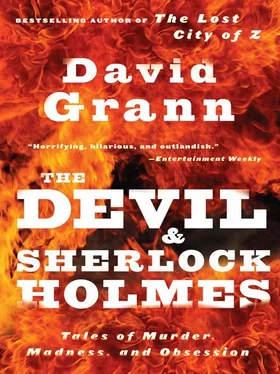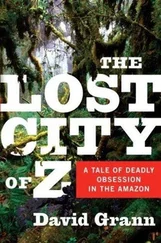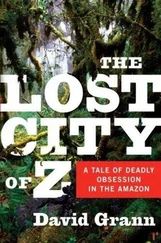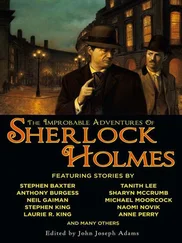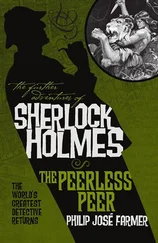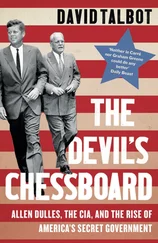When I asked him what he initially found compelling about the gang, he paused for a long moment. “That’s a very good question,” he said. There was the protection, he suggested, ticking off the reasons. There was the sense of belonging. But that wasn’t really it. For him, at least, he said, it was the rush of power. “I was naïve, because I saw us as these noble warriors,” he said. In the eighties, he added, he had tried to change the nature of the gang. “I thought that by organizing we could make the gang less bloody. I thought we could strip away the irrational killings. But I was foolish, because at some level you could never remove that. And the structure only allowed the gang to be more deadly.”
During our conversation, Thompson cited various philosophers, including Nietzsche, whose “true genius,” he later wrote me in a letter, “the gang often misinterprets.” It was hard to reconcile this cerebral figure with a man who said he had once helped to stab sixteen men in a single day. But, when I asked him about his training, he reached out with his hand and began, in almost clinical fashion, to show how to assassinate someone. “You can do it here on the right side of the heart, in the aorta, or here in the neck, or back here in the spine, which will paralyze someone,” he said, moving his hand back and forth, as if slicing something. “I’ve been in jail thirty years now, and I know I am probably never going to get out. I am a dangerous person. I don’t like violence, but I am good at it.”
He had tried, he said, to isolate himself from other prisoners. “I don’t go in the yard much,” he said. “It’s not safe.” He said the only people he could really interact with were the guards, for fear of being recognized. “In here, I am lower than child killers and child molesters. Because I defected from the A.B., I am the lowest there is.”
The gang had tried several times to get to him; after he was placed in the protective-custody unit, he said, the Brand sent in a “sleeper”—a secret collaborator—who had tried to stab him. “You need to understand one thing,” Thompson said. “The Aryan Brotherhood is not about white supremacy. It is about supremacy. And it will do anything to get it. Anything.”
A guard banged on the door. “I have to go now,” he said.
As he stood, he pressed his hand against the glass, and I could see something green on his left hand. I looked closer: it was the faint outline of a shamrock. Armed with that tattoo, Thompson had told me, a man could take over an entire United States penitentiary.
In the fall of 1994, a bus filled with prisoners arrived at Leavenworth, Kansas, a maximum-security federal prison built almost a century ago. Out stepped a tall muscular man with a black mustache. His arms were covered with tattoos, and he soon appeared in the yard without a shirt, revealing a large shamrock in the middle of his chest. He was immediately surrounded by a group of white inmates. Many went to the commissary and paid to have their photograph taken with him, which they carried around like passports. “If you … were able to show that picture, it was just like standing next to your favorite pop star,” one prisoner said.
The man’s name was Michael McElhiney, but everyone called him Mac. A reputed A.B. member, he had just come from Marion, where he had been housed with Barry Mills, the notorious Baron. Mills, who later testified in court on McElhiney’s behalf, said, “I look at him like a son.”
McElhiney, a convicted methamphetamine dealer who had conspired to kill a witness, was so charismatic that, according to authorities, a juror once fell in love with him. However, in private letters, which were later confiscated by prison officials, Mac spoke openly of “the beast” inside him and referred to himself proudly as “an angry motherfucker.” An F.B.I. agent at Leavenworth described him as probably “a psychopath,” while a close friend put it this way: “He likes to have everybody know that he’s God.”
An Aryan Brotherhood presence had long existed at Leavenworth, which was known as “the hothouse,” because of its sweltering, catacomb-like cells. But McElhiney was determined to extend the gang’s reach.
Although the Brand maintained remnants of its racist ideology, it had increasingly sought, according to a declassified F.B.I. report, “to launch a cooperative effort of death and fear against staff and other inmates … in order to take over the system.” The Brand aimed, the F.B.I. warned, to control everything from drug trafficking to the sale of “punks”—inmates forced into prostitution—to extortion rackets to murder contracts behind bars. It sought, in short, to become a racketeering enterprise. The council member Clifford Smith had told authorities that the gang was no longer primarily “bent on destroying blacks and the Jews and the minorities of the world, white supremacy and all that shit. It’s a criminal organization, first and foremost.”
Using an array of white associates, who either coveted membership in the gang or needed protection, McElhiney set out to dominate Leavenworth’s underground economy. His men went from tier to tier, demanding a tax from the sale of “pruno”—prison wine that could be brewed out of almost any cafeteria fruit (apples, strawberries, even ketchup). At the time, a man named Keith Segien was running a friendly poker game in the prison’s B unit. One night on his way to his cell, Segien later testified in court, Mac was waiting for him. He told Segien to sit down.
Segien hesitated. “What’s this about?” he asked.
“If I wanted you killed,” Segien recalls him saying, “you’d have been dead by now.” Then Mac added, “Someone told me you don’t want me … to run the poker game, and I’m here to make money. I’m going to run the poker game.” He asked if Segien had a problem with that.
“I said no,” Segien testified. “That was the last day I ran the poker game.”
Mac soon had gambling rackets operating in nearly every unit, on nearly every tier. As with the sale of pruno, inmates say, the guards often turned a blind eye, perhaps to mollify a seething population. Some guards, it seemed, had come to consider the Aryan Brotherhood presence as inevitable, and even used its leaders as surrogate power brokers. In one instance, a guard at Leavenworth went to McElhiney to get the O.K. before he released another prisoner in the yard. One longtime A.B. member compared the illicit operations in maximum-security prisons to bootlegging during Prohibition and to the high-roller tables in Las Vegas.
Currency is not allowed in prison, and inmates typically paid their smaller debts to the Brotherhood by offering free contraband or items from the commissary: cigarettes, candy, stamps, books. At the high-roller tables at Leavenworth, where imprisoned drug lords could place bets in the thousands of dollars, participants were allowed to play for a month on credit. The man in charge of the table kept a tally of wins and losses. At the end of the month, inmates say, Mac’s men would collect the losses; usually, gamblers would pay up by having a relative or a friend send an untraceable money order to a designated A.B. person on the outside. If an indebted inmate didn’t have the money mailed on time, internal prison records show, he was typically “piped”—beaten with a metal rod. McElhiney later acknowledged that he was funnelling the proceeds to his mentor Mills and to other reputed leaders of the Aryan Brotherhood, with whom he had “a pact” to take over the “gambling business.”
McElhiney, who presided over the yard wearing sunglasses, his nails often stained yellow from chewing tobacco, then decided to focus on drug smuggling. In the past, the Brand had sought out almost anyone who could bring in its merchandise. In one instance, several inmates involved in a scheme told me, the gang offered to protect Charles Manson, and even conspired in a failed bid to help him escape; in return, Manson’s cult of women on the outside helped to smuggle dope into prison for them.
Читать дальше
